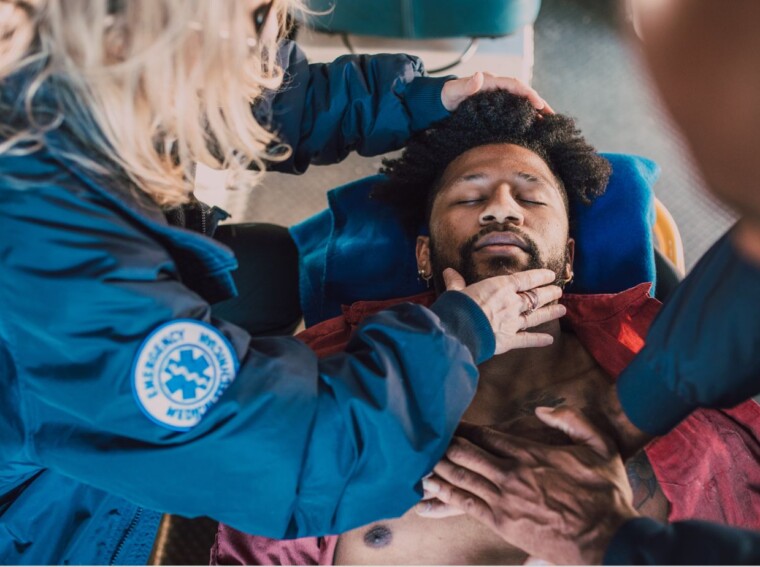After Establishing That an Adult Patient is Unresponsive You Should
When faced with an adult patient who is unresponsive, it is crucial to act swiftly and effectively. As a healthcare professional, I have encountered numerous situations where quick assessment and intervention have made all the difference. In this article, I will share my expertise on how to navigate the initial steps after establishing that an adult patient is unresponsive.
Assessing an unresponsive adult patient requires a systematic approach that leaves no room for error. In my years of experience, I have learned the importance of a thorough primary assessment to identify any life-threatening conditions. In this article, I will walk you through the key components of a primary assessment, including checking the patient’s airway, breathing, and circulation. By following these steps diligently, you’ll be able to quickly identify and address any immediate threats to the patient’s well-being.
Assessing Unresponsiveness in Adult Patients
When it comes to handling an unresponsive adult patient, it is crucial to follow a systematic approach to ensure the best possible care. After establishing that the patient is unresponsive, there are several important steps that healthcare professionals should take to assess the situation and provide appropriate treatment. Let’s delve into the process of assessing unresponsiveness in adult patients:
- Check for responsiveness: The first step is to attempt to wake the patient up by gently tapping their shoulder and asking if they are okay. If there is no response, it is important to quickly move on to the next step.
- Call for help: Contacting emergency medical services (EMS) or activating the hospital’s emergency response team is vital at this stage. The sooner additional medical assistance arrives, the better the chances of a positive outcome for the patient.
- Assess the patient’s breathing: Observe the patient’s chest for any signs of breathing. Look for the rise and fall of the chest and listen for any sounds of breathing. If the patient is not breathing or only gasping, immediate action is required.
- Check for a pulse: Assess the presence of a pulse by feeling for it at the carotid artery, located in the neck. If a pulse is absent or weak, it indicates a cardiac arrest and immediate cardiopulmonary resuscitation (CPR) should be initiated.
Remember, time is of the essence when dealing with an unresponsive adult patient. Quick and accurate assessment is crucial for determining the appropriate course of action and initiating life-saving measures. By following these steps, healthcare professionals can provide the best possible care and improve the chances of a positive outcome for the patient.

Recognizing the Signs of Unresponsiveness
Absence of Wakefulness
When assessing an adult patient for unresponsiveness, the first step is to determine if there is any wakefulness. After establishing that the patient is unresponsive, it is crucial to take immediate action.
To assess wakefulness, I gently try to wake the patient up by calling their name and asking if they are okay. If there is no response, I move on to the next steps in the assessment process.
Lack of Response to Stimuli
After establishing the absence of wakefulness, I then proceed to check for a lack of response to stimuli. This involves trying various methods to elicit a response from the patient.
First, I gently tap the patient’s shoulder or apply a light pressure to their sternum to stimulate a response. If there is still no response, I proceed to more aggressive stimuli such as a sternal rub or a gentle pinch on their arm.
It is important to note that when performing these stimuli, I need to be cautious not to cause any harm to the patient. The goal is to elicit a response, but not to inflict unnecessary pain or injury.
If there is no response to any of these stimuli, it is a clear indication that the patient is unresponsive. This information is crucial for determining the appropriate course of action and initiating life-saving measures.
Remember, time is of the essence when dealing with an unresponsive adult patient. By promptly recognizing the signs of unresponsiveness, healthcare professionals can quickly move on to the next steps in the assessment process, including calling for help, assessing the patient’s breathing, and checking for a pulse.
Consulting with medical professionals is emphasized as a crucial step in ensuring appropriate care and obtaining expert guidance. This collaboration provides benefits such as receiving medical advice and direction, access to specialized knowledge, and confirmation and validation of findings. Effective communication and providing relevant information to medical professionals are key in providing the best possible care for an unresponsive adult patient.

